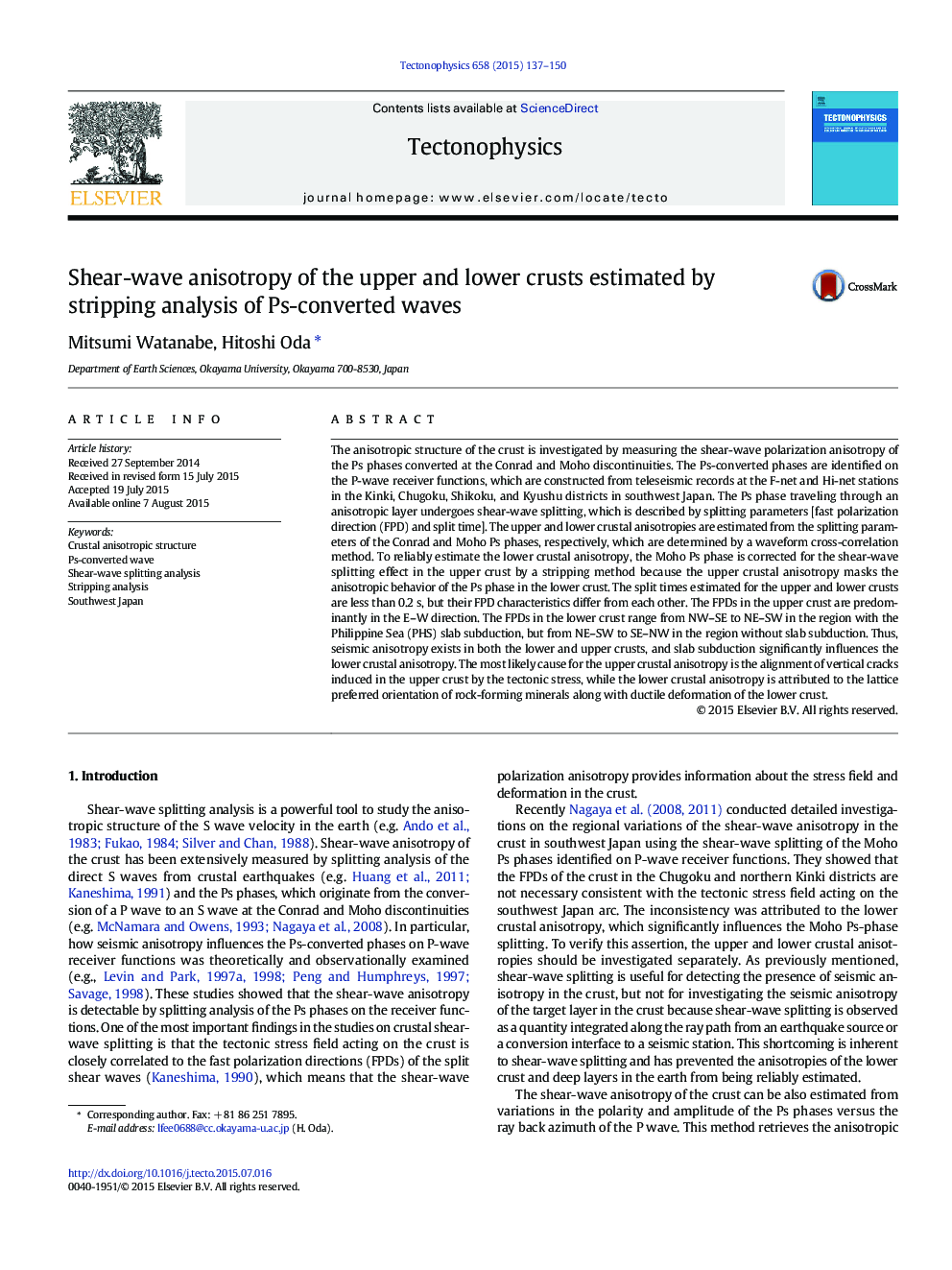| کد مقاله | کد نشریه | سال انتشار | مقاله انگلیسی | نسخه تمام متن |
|---|---|---|---|---|
| 4691533 | 1636737 | 2015 | 14 صفحه PDF | دانلود رایگان |

• Shear-wave anisotropy of the crust was measured using Ps phase splitting.
• Anisotropic structure of the crust in southwest Japan was estimated.
• Anisotropic properties of the upper and lower crusts differ from each other.
• The upper crust shows shear-wave polarization anisotropy fast in E–W direction.
• Shear-wave anisotropy of the lower crust is influenced by the PHS slab subduction.
The anisotropic structure of the crust is investigated by measuring the shear-wave polarization anisotropy of the Ps phases converted at the Conrad and Moho discontinuities. The Ps-converted phases are identified on the P-wave receiver functions, which are constructed from teleseismic records at the F-net and Hi-net stations in the Kinki, Chugoku, Shikoku, and Kyushu districts in southwest Japan. The Ps phase traveling through an anisotropic layer undergoes shear-wave splitting, which is described by splitting parameters [fast polarization direction (FPD) and split time]. The upper and lower crustal anisotropies are estimated from the splitting parameters of the Conrad and Moho Ps phases, respectively, which are determined by a waveform cross-correlation method. To reliably estimate the lower crustal anisotropy, the Moho Ps phase is corrected for the shear-wave splitting effect in the upper crust by a stripping method because the upper crustal anisotropy masks the anisotropic behavior of the Ps phase in the lower crust. The split times estimated for the upper and lower crusts are less than 0.2 s, but their FPD characteristics differ from each other. The FPDs in the upper crust are predominantly in the E–W direction. The FPDs in the lower crust range from NW–SE to NE–SW in the region with the Philippine Sea (PHS) slab subduction, but from NE–SW to SE–NW in the region without slab subduction. Thus, seismic anisotropy exists in both the lower and upper crusts, and slab subduction significantly influences the lower crustal anisotropy. The most likely cause for the upper crustal anisotropy is the alignment of vertical cracks induced in the upper crust by the tectonic stress, while the lower crustal anisotropy is attributed to the lattice preferred orientation of rock-forming minerals along with ductile deformation of the lower crust.
Journal: Tectonophysics - Volume 658, 25 September 2015, Pages 137–150